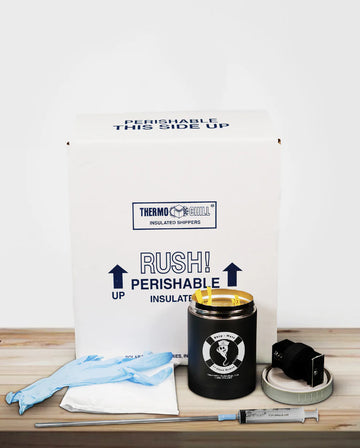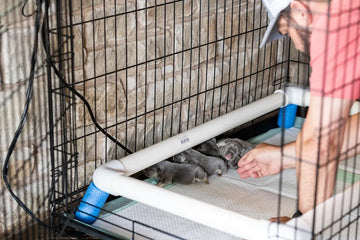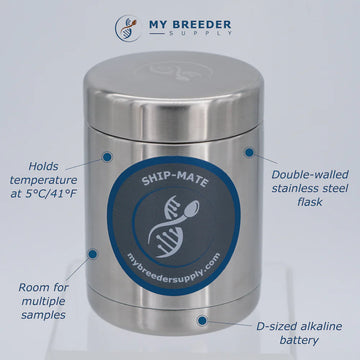The Role of a Puppy Feeding Tube: Ensuring Proper Nutrition and Care
by Phenyx Media on Sep 06, 2023

Introduction to Puppy Feeding Tubes
Have you ever encountered a newborn puppy struggling with nutrition? It can be a heartbreaking sight, right? That's where a puppy feeding tube steps in. This lifesaver is a thin, flexible tube that allows direct feeding into a puppy's stomach, ensuring they receive the proper nutrients needed for growth and development.
The Importance of Nutrition in Puppy Growth
You might be wondering, "Why all the fuss about nutrition?" Well, let's put it this way. Imagine trying to build a house without bricks; pretty impossible, huh? Similarly, proper nutrition is the building block for your puppy's health. It promotes healthy growth, aids in organ development, and boosts the immune system.
Situations Requiring a Puppy Feeding Tube
Not all puppies need a feeding tube. So, when is it necessary? Puppies who are weak, struggling to nurse, or orphaned often benefit from tube feeding. It also aids in cases of large litters where the mother cannot adequately feed all the pups.
How to Use a Puppy Feeding Tube

Step-by-Step Guide to Tube Feeding
Tube feeding might sound like rocket science, but it's more like baking a cake - once you have the right instructions. First, always consult your vet for the proper feeding amount. Then, sterilize the tube, draw up the puppy formula, insert the tube carefully into the puppy's stomach, and slowly push the plunger.
Safety Precautions While Tube Feeding
Safety first, right? Always ensure the tube is in the stomach and not the lungs by checking for negative pressure. Keep the feeding process calm and never force the puppy. It's also important to keep the formula at room temperature to avoid upsetting the puppy's stomach.
Recognizing Signs of Malnutrition in Puppies
Key Indicators of Malnutrition
Knowing what to look for is half the battle. Symptoms such as low energy, weight loss, dull coat, and lack of appetite can indicate malnutrition. It's like the check engine light in your car, signaling that something needs your attention.
When to Consult a Vet
When do you need to call in the experts? If your puppy shows continuous signs of malnutrition despite proper feeding, it's time to consult your vet. Remember, it's better to be safe than sorry.
Common Challenges with Puppy Feeding Tubes
Overcoming Feeding Difficulties
Does using a feeding tube sound daunting? It's natural to feel overwhelmed. But with practice, it becomes easier. The key is to be patient and gentle. If the puppy resists, give them a break and try again later.
Dealing with Potential Risks
Like any procedure, tube feeding comes with potential risks like aspiration or injury. But don't panic, these risks can be minimized by following the correct procedure and seeking professional advice when needed.
Ensuring the Long-Term Health of Your Puppy

Transitioning From Tube Feeding
Eventually, the time will come to transition your puppy from tube feeding to regular feeding. Start this transition by slowly introducing small amounts of solid food. Like weaning a baby off milk, this process should be gradual and guided by your vet's advice.
Tips for Gradual Weaning
Gradual weaning isn't a sprint; it's a marathon. Start by adding small amounts of puppy food into their diet while decreasing the frequency of tube feeding. Monitor their reactions and progress, and remember to take one step at a time.
Conclusion
In a nutshell, a puppy feeding tube can be a lifesaver, providing critical nutrients to puppies who struggle with nursing or are unable to get adequate nutrition. However, it requires careful handling, attention to safety, and a strong understanding of your puppy's needs. Always consult with a vet before making any drastic changes to your puppy's diet.
Frequently Asked Questions
What size feeding tube is best for a puppy?
Different puppies might require different sized feeding tubes based on their size and breed. It's always best to consult with your vet to determine the appropriate size.
How long does a puppy need to be tube-fed?
This can vary widely depending on the puppy's health and circumstances. Always follow the advice of your vet.
Can tube feeding harm my puppy?
If done incorrectly, tube feeding can pose risks. However, with the right training and precautions, it is a safe and effective method to ensure proper nutrition.
How often should a puppy be tube-fed?
The frequency of feeding depends on the puppy's age, size, and health status. Generally, newborn puppies require feeding every few hours.
What should I feed my puppy through the tube?
Typically, a specially designed puppy milk replacement formula is used. Homemade or human formula should never be used without the guidance of a vet.




